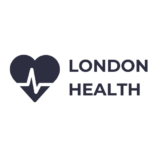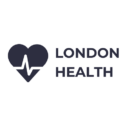Cardiomyopathy is a condition which occurs when the muscle of the heart becomes swollen and enlarged; consequently, the heart doesn’t function as effectively as it should. There are three main types of cardiomyopathy; these include dilated cardiomyopathy, hypertrophic cardiomyopathy and restrictive cardiomyopathy.
- Dilated cardiomyopathy: this occurs when the cavity of the heart is abnormally large; this is the most common type of cardiomyopathy. This condition commonly results in heart failure.
- Hypertrophic cardiomyopathy: this occurs when the muscle tissue in the left ventricle becomes enlarged; this obstructs blood flow.
- Restrictive cardiomyopathy: this occurs when the ventricles become abnormally rigid and the blood cannot flow freely.
Causes of cardiomyopathy
In most cases, it is impossible to identify the exact cause of cardiomyopathy but there are a number of factors which may contribute to the development of this condition; these include:
- Hypertension (high blood pressure)
- Damage from previous heart problems, such as a heart attack
- Prolonged excessive drinking
- Irregular heart beat
- Pregnancy
- Metabolic conditions (such as thyroid problems)
- Viral infections
- Heart valve disease
Symptoms of cardiomyopathy
Common symptoms of cardiomyopathy include:
- Dizziness and light-headedness
- Swollen ankles and feet
- Exhaustion
- Heart palpitations
- Bloating
- Breathing difficulties (especially during physical activity)
Treatment for cardiomyopathy
Treatment depends on the nature of the illness and which type of cardiomyopathy the patient is suffering with.
- Dilated cardiomyopathy: treatment usually involves medication, which is used to improve the function of the heart. If medication alone is not enough to bring about a sufficient improvement in heart function, a pacemaker or an ICD (implantable cardioverter-defibrillator) may be fitted; these devices control heart rhythms.
- Hypertrophic cardiomyopathy: treatment usually involves beta blockers, which control heart rhythm, relax the heart muscle and improve the pumping action. Devices, such as pacemakers, may be fitted but this is not very common.
- Restrictive cardiomyopathy: treatment is used to control the symptoms of the condition; medication may be prescribed to control heart rhythms.
Keeping your heart healthy
Living a healthy lifestyle is extremely beneficial to your heart; making a few small changes to your diet, exercise habits and lifestyle choices can make a huge difference to your health and can prevent you from developing heart conditions in the future. The following guidelines will help to keep your heart fit and healthy and reduce the chances of you suffering from heart disease further down the line:
- Eat well: this involves eating plenty of fruit, vegetables, wholegrain foods and foods that are high in fibre.
- Reduce your cholesterol: cholesterol causes fatty substances to collect in the arteries so avoid eating foods that are high in ‘bad’ cholesterol (low density lipoproteins) on a regular basis; examples of these foods include cheese, fried food, cake, butter and reformed meats.
- Exercise regularly: try to raise your heart rate for at least 30 minutes 5 times a week; this will keep your heart fit and healthy, as well as improving your muscle tone and circulation and reducing muscle tension and blood pressure
- Lose weight (if you’re overweight): being overweight puts pressure on the heart and the other organs and causes blood pressure to increase
- Avoid stressful situations
- Give up smoking
- Cut back on drinking
- Avoid recreational drugs
- Reduce your salt intake

